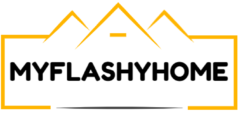
Buying a home is one of the biggest financial decisions a person can make. In North Dakota, home prices vary depending on location, making it important for buyers to understand their budget before starting the process. Whether purchasing in Fargo, Bismarck, or a more rural area, setting a clear financial plan helps avoid future financial strain.
Many people focus on the purchase price, but homeownership comes with additional costs. Mortgage rates, down payments, closing costs, and maintenance expenses all factor into long-term affordability. Planning ahead allows buyers to confidently invest in a home that fits their financial situation.
Understanding Home Prices
North Dakota’s housing market offers different price points depending on the city or town. Larger cities tend to have higher housing costs due to demand and economic growth. On the other hand, smaller towns and rural areas provide more affordable options.
Market conditions can also affect pricing. Interest rates, local job markets, and available inventory all influence home values. Buyers should research current trends and compare prices in different areas to make an informed decision.
How Mortgage Rates Affect Affordability
Mortgage rates play a major role in determining the overall cost of a home. A lower interest rate can reduce monthly payments, making homeownership more manageable. However, rates fluctuate based on economic factors, credit scores, and loan types.
For buyers in North Dakota, it is important to stay updated on mortgage trends before committing to a loan. Comparing different lenders and loan options can help find the best rate. North-Dakota mortgage rates change over time, so reviewing current offers can provide a better understanding of affordability before making a purchase.
Determining a Realistic Budget
Setting a budget before house hunting helps buyers avoid financial stress. A common guideline is that housing costs should not exceed 28% of gross monthly income. This percentage includes the mortgage payment, property taxes, and homeowner’s insurance.
Tracking income and expenses gives a clear picture of what is affordable. Buyers should consider their current financial commitments, such as student loans, car payments, and daily living costs. Overcommitting to a mortgage can lead to financial difficulties, so leaving room in the budget for unexpected expenses is important.
Saving for a Down Payment
The amount saved for a down payment affects monthly mortgage costs and loan terms. While some loans require as little as 3% down, a larger down payment can lower the total loan amount and reduce interest expenses over time.
Some buyers may qualify for down payment assistance programs, which help cover initial costs. Researching these options can make homeownership more accessible. Setting up automatic savings or using a separate account for home-related expenses can make it easier to reach a down payment goal.
Understanding Closing Costs and Additional Fees
Many homebuyers focus on the down payment but forget about closing costs. These fees cover loan origination, title insurance, property appraisals, and other administrative expenses. Buyers should expect to pay between 2% and 5% of the home’s purchase price in closing costs.
Some lenders allow closing costs to be rolled into the mortgage, but this increases the loan balance and total interest paid over time. Comparing loan offers and negotiating with lenders can sometimes help reduce these fees. Knowing these expenses upfront helps buyers avoid last-minute financial strain.
Choosing the Right Mortgage Option
There are different types of mortgage loans, each with unique benefits and requirements. First-time buyers often choose between fixed-rate and adjustable-rate mortgages.
- Fixed-rate mortgages have stable monthly payments, making them predictable for long-term budgeting.
- Adjustable-rate mortgages (ARMs) start with lower interest rates but can fluctuate, which may increase payments in the future.
Government-backed loans, such as FHA and VA loans, offer lower down payment requirements and flexible credit qualifications. Additionally, some buyers may benefit from a Buy Before You Sell Program, which allows them to secure their next home while simultaneously selling their current one, reducing the stress of coordinating both transactions.
Learn more: How To Sell and Buy a House at the Same Time
Buyers should compare loan terms, interest rates, and eligibility requirements before deciding on a mortgage.
Planning for Homeownership Expenses
Owning a home comes with ongoing costs beyond the mortgage. Property taxes, homeowner’s insurance, and maintenance expenses add to monthly financial responsibilities. Unexpected repairs, such as plumbing issues or roof damage, can be costly if funds are not set aside in advance.
Creating a home maintenance fund helps cover these expenses without relying on credit. Setting aside a small amount each month prevents financial stress when repairs are needed. Regular home maintenance also reduces the risk of major, costly problems in the future.
Utility bills can also vary based on the size and location of the home. Heating and cooling costs may be higher in certain areas, so factoring in seasonal expenses is important. Homeowners associations (HOAs) in some neighborhoods may charge fees for maintenance and community services. Planning for these additional costs helps buyers avoid financial surprises after moving in.
How Credit Score and Debt Impact Loan Approval
Lenders consider credit scores when approving mortgage applications. A higher credit score can lead to better interest rates and loan terms, while a lower score may result in higher costs or loan denial.
Paying bills on time, reducing credit card balances, and avoiding new debt before applying for a mortgage can improve creditworthiness. Checking credit reports for errors and disputing inaccuracies helps maintain a strong financial profile.
Debt-to-income (DTI) ratio also affects loan approval. Lenders prefer borrowers with a low DTI, meaning they have more income available for mortgage payments. Reducing existing debt before buying a home can improve the chances of getting favorable loan terms.
Budgeting for a home involves more than just the purchase price. Buyers need to consider mortgage rates, down payments, closing costs, and ongoing expenses. Planning for these costs helps prevent financial difficulties and makes homeownership more manageable.
Understanding mortgage options, tracking expenses, and maintaining a strong credit score all contribute to long-term financial stability. By making informed decisions, homebuyers can enjoy the benefits of homeownership without unnecessary financial stress.

